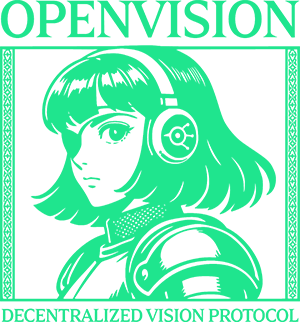
At this very moment there are a lot of changes transpiring throughout the entire cryptocurrency market space. From a Top 10 cryptocurrency coin plummeting in value almost instantly, to multiple stablecoins losing their stability and unpegging from the US Dollar, to questions surrounding safety and security in crypto investing which stimulates further dialogue around the need for regulation, or not - depending on who you’re speaking with. Yes, the world of crypto has been anything but boring over the past couple of weeks.

So What’s New in the World of Cryptocurrency?
On Monday May 9th - $LUNA (now known as Luna Classic $LUNC) - the 10th largest cryptocurrency was soaring at a market cap of over $20 billion USD combined when just a few moves by reportedly wealthy traders, brought the entire Terra LUNA ecosystem to a sudden crash. It was determined through blockchain forensics, that investors attempted to create a scenario which would yield massive profits by shorting Bitcoin. The way the Terra ecosystem is designed, anytime a massive sell off of TerraUSD (UST) would occur, the Luna Foundation Guard, established mainly to protect the peg to the Dollar, would then sell a portion of BTC to reinforce the peg.
It is believed that whoever was responsible for the attack developed a sizable staked potion in TerraUSD (UST) within the ANCHOR protocol platform, the DeFi platform where UST was staked at a beginning rate of 20% APY. This amount was already suspicious to some investors when first announced, questioning how such large yields could be produced and paid to staked investors. Nevertheless, $2 Billion was unstaked on May 7, breaking the peg by $.09, to $.91 against the dollar. Another element of the ecosystem was set up so that regardless of the value of either, UST could be swapped 1:1 with LUNA, so as part of this response, many investors began following the trend to unstake UST in order to cash in on the $.09 difference by swapping UST for LUNA, and thus creating more sell pressure.
As a result of the pressure, $3 billion in BTC was sold by the Luna Guard Foundation to attempt to protect the peg, which did not work. This would have given the investors waiting for BTC to drop in order to profit, exactly what they’d planned for - even greater BTC sell pressure, but the residual damage also continued to ripple.
The two most traded coins within the Terra ecosystem of the old ecosystem prior to LUNA 2.0 had been TerraUSD (UST) and LUNC, the original blockchain network token, now phased for 2.0. TerraUSD(UST) was designed as what is called an algorithmic stablecoin, so essentially every time TerraUSD is purchased, in order for the value to remain consistent, there is a portion of LUNC that would be burned and reserved to back up its value. In a matter of 24 hours the TerraLuna ecosystem would plummet by over 85%, and even more over the days following, as much as 97%. It is believed that about $17 billion was extracted in total, from the Luna ecosystem alone through the manipulation.
While there were a series of immediate responses and plans drafted thereafter, the massive panic not only caused an obvious downward spiral within the Terra ecosystem, but also throughout the crypto market space. Because of the ecosystem being tied to BTC and overall volatility excessively high in the negative and market confidence being low, the panic spread all the way to the top, as the Bitcoin network was adversely affected. The $3 billion in reserves that were sold is believed to have caused greater sell offs, and the link BTC and BTC investors have with the second largest ecosystem, ETH, was also then affected. Ethereum experienced sell offs in the frenzy, dropping below $2,000 per coin for the first time in about 2 years.
Further Effects of the Crash
For one, there were serious reports of mental health concerns and other extreme stress responses which poured in from investors who had portions of those many billions lost by the manipulation which occurred. One such investor, a crypto influencer and Terra investor who shares Terraform Labs CEO and Founder Do Kwon’s home country of South Korea, actually traveled to his home and knocked on the CEO’s door in order to have a transparent conversation on live stream.
Unfortunately the act was seen as threatening and after answering the door, and letting him know that Do Kwon was not at the residence, his wife still called police even though he’d left the premises. The influencer, known as Chancers, alleged to have lost over $2.4 million in the TerraLuna crash, maintains that he wanted a genuine conversation with the Terraform Labs CEO, nothing threatening. He was still charged and later processed for arrest and now faces possible prosecution.
Do Kwon has also allegedly been served a subpoena by the Securities and Exchange Commission, as well as tax evasion claims brought by the South Korean government, and the 31 year old also faces an investigation behind the occurences. In spite of the major crash and events resulting from it, he and the Luna Foundation Guard seem to have confidence to restore the ecosystem and build even.
Plans for a new blockchain to migrate the original TerraLuna ecosystem onto had been rolled out by Do Kwon, and at first was not received well by pretty much the entire Terra investor community. After adjustments were made and clarity offered, the plans for a new blockchain passed with a 65% vote so that the network would have the opportunity to rebound to some respectable degree, although many questions and uncertainty still remained. The new launch took place on May 27th and LUNA 2.0 launched successfully. As could have been anticipated, there was a crash, about 80% of the value this time, which was due to original LUNA holders being airdropped because of the losses incurred on the old network. Old holders took the opportunity to recapture some degree of the original losses, rushing to cash in immediately after the launch of 2.0.
What Does All of this Mean for the Bigger Picture?
The recent issues with the Terra Luna ecosystem have raised more concerns over safety in the cryptocurrency market. The nature of the digital assets market is currently open and relatively unregulated on the whole. This has been the biggest reason for the hesitation exhibited by large corporations and institutional banks from completely crossing the threshold to fully integrate within the cryptocurrency market space.
There is a growing call for rules and regulations to be established for the substantial scaling that many cryptocurrency advocates want to see. Crypto is still regarded by many critics and objective analysts alike to be much like the “wild west”, referencing a current day gold rush with rules still not created for clarity across the board. With all that has occurred recently, and leading up to this most recent season, the call for regulation almost has to be considered by anyone willing to look honestly at the factors.
Realistically, in order for any system of currency to be trusted by members of the public, there almost has to be a way to protect and hedge it against the levels of volatility cryptocurrencies are subject to. If a $2 billion dollar move was able to completely dethrone the 10th largest crypto ecosystem by market capitalization, that has to be looked at seriously in order to protect all levels of investors. Imagine a decentralized channel being utilized by a major corporation as an active payment gateway for instance, and the network crashed in such a way as Luna did? The effects could be even more catastrophic.
The greater public responsibility which national and international governing bodies have to individuals and their constituents require a higher degree of accountability. Systems are the only thing that can be audited and managed for such necessary processes. This ensures a greater degree of protection from the potential of such devastating losses as have been sustained in this month of May through the crypto market.
Other Losses Experienced in the Market
Two days later, stablecoin USDT also unpegged from the US Dollar. There were many criticisms that arose directly speaking on flaws of the algorithmic stablecoin TerrUSD (UST). Many even claimed before it ever happened, that the model was doomed from the beginning due to the method in which the peg has to be maintained in the wake of large currency fluctuations within the ecosystem like what occurred. However, USD Tether is different in that it is not an algorithmic stablecoin, and despite being backed by physical assets, still fell to $.95 on May 12, just a few days after Terra. This further perplexed investors and crypto industry followers.
Tether has been under close scrutiny for some time already, and had to produce records and evidence of its holding in an eventual settlement with the NY state Attorney General. It was revealed then that Tether was actually a mixture of commercial and assets in addition to USD, which was used to back the stablecoin asset. The Tether unpeg was corrected within the same calendar day, but it was still enough to create even more panic within an already stressed crypto market just days behind the Luna crash, and lows which rippled marketwide.
Tether Answers with a Pesos-Pegged Stablecoin
Tether is the third-largest crypto stablecoin ecosystem. As a response to the recent issues on the market, Tether showed signs of strength by releasing MXNT, a stablecoin pegged to the Mexican peso. MXNT offers traders and investors in the cryptocurrency space with opportunities to capture stability with yet another fiat currency base.
The Tether ecosystem already offers stablecoins pegged to the US Dollar (USDT), Euro (EURT), and Chinese Yuan (CNHT). The move by Tether could certainly be seen as a sign of strength, just after USDT briefly became affected by the volatility experienced over the last several weeks. As of the same time frame, BTC, ETH, ADA, BNB and Shiba Inu all surged beyond 10% together for the first time in quite some time. This was reported in the market on May29, just a day after MXNT was deployed.
More Ripples Occur Through the Market
As if that wasn’t enough, even more unsettling events occurred in the crypto market not long after the Luna crash, dramatic unpegging of UST, and loss of the USD Tether peg to the dollar for a day. The Fantom network created an algorithmic stablecoin for its network, and on May 16th, that stablecoin - the DEI lost its peg to the dollar also. This created a shockwave in the popular Fantom network and the crypto community at large. The DEI fell to about $.52 on the 17th, and at the time of writing, has recovered to $.60 to this point.
Why this is all so Crucial
The issue is that it brings up more questions of security and safety of investors’ funds. In order to fully comprehend the nature of these issues, it is important to understand why stablecoins exist. Stablecoins are supposed to allow investors to hedge their funds in times of greater volatility, and just to essentially preserve capital when not involved in an active crypto trade. If investors are not able to trust that a stablecoin is in fact stable, they are not able to depend on the actual system, and regardless of one’s thoughts on the need or not for government involvement in the cryptocurrency industry, this has to be considered because of the duty of regulatory bodies.
The differences between the traditional finance industry and cryptocurrency market are still vast. This should also be understood in order to fully grasp the source of the excessive volatility that is often associated with crypto. While the market is largely unregulated, one main reason for such volatility is linked and related to differences in market liquidity which reflects actual capital in the combined market. To make it relatable, the $2 billion dollars that was able to derail the entire ecosystem of the 10th largest crypto and other cryptocurrency networks all the way to the largest, BTC, would almost certainly have never happened in the traditional finance sector due to the presence of abundantly more liquidity in those combined markets
To give an idea of those differences, trade volume within the traditional stock market was well over $100 trillion in 2021, while all centralized crypto exchanges (yes, the big boys) totaled $14 trillion in total trade volume. Decentralized exchanges accounted for only $1 trillion combined, which was in fact, a massive spike from the $250 billion total trade volume charted in the prior year, 2020. The SEC (Securities and Exchange Commission) works to keep rules in place to ensure fairness and balance while the Fed (US Federal Reserve) actively works from the basis of the USD supply with existing regulated markets to ensure certain balances are maintained with the currency supply, and can therefore alter interest rates and other economic mechanisms to keep inflation other factors managed.
As of today the cryptocurrency market is down considerably from its positions last year. Earlier this year in March, the crypto market crossed back over $2 trillion for the first time again since 2021. As BTC and ETH slowly climbed again, with altcoins also showing some promise, sentiment over the market was still uncertain, but that has been nothing new in crypto. Volatility has been a part of the greater crypto market since its inception, but corrections made in bear markets have usually been recovered and the market has had a habit of rallying to include more currency and significant pumps as they are referred to by many crypto enthusiasts, in times of bull markets.
Many feel the same is inevitable now given the current state of the market, but feelings are more mixed perhaps than they’ve ever been before as regulators ramp up bill proposals and public scrutiny of what they call unstable and seedy practices by many in the digital assets market and blockchain industry. Regardless of what is to come, with Bitcoin down over 50% from its high which was charted just 6 months ago, and Ethereum down 60% of its all time high of $4,891, the market is certainly down. While it is still unknown if this is a massive correction which needed to happen for accuracy in the cryptocurrency market, or just another Bear market, anyone who’s been around for a while has to admit that this feels different.
Some Traders and Investors Making Plans for a Market Surge
For some who have been in the DeFi and crypto space for some time now, there exists the idea that this is the time to do research and find out which ecosystems and decentralized projects should be chosen and invested into over the next phase, to usher in yet another eventual bull market. While some are panicking or flustered, there are those who have grown further poised, as they truly believe this is just a phase, regardless of legislation coming or not.
No one knows what tomorrow will actually bring concerning the state of the crypto market, but there are certainly more politicians and lawmakers speaking out these days than ever before, and while it cannot be said with confidence what it all actually means for certain, anyone who investigates even a little almost has to agree that some form of regulatory standards are impending some time in the not too distant future.
The Bigger Picture
In terms of the larger picture, experienced investors know that these downtimes in the market are simply periods of rectracing and correction, when the next rounds of market surges usually begin. Regardless of how long it takes to swing, the overall sentiment is that normally a new class of digital assets and decentralized projects arise in times such as these.
Established ecosystems continue to build also and typically create new offerings that are designed to further bring in the next phase of the market. Without going out on too much of a limb and making predictions, there have been a large class of fan and gaming tokens and ecosystems that have been seen and grabbed the spotlight in recent months. Projects which give sports team fans and other admirer communities the opportunity to make governance decisions that sometimes impact the team or entity with holdings.
The metaverse continues to develop new and cutting edge utility as well. Either way, seasoned traders and investors are studying and researching at greater lengths in the current state of the market, as this is often seen as the time to become more actively engaged, not less, in an effort to prepare for future market gains.



































